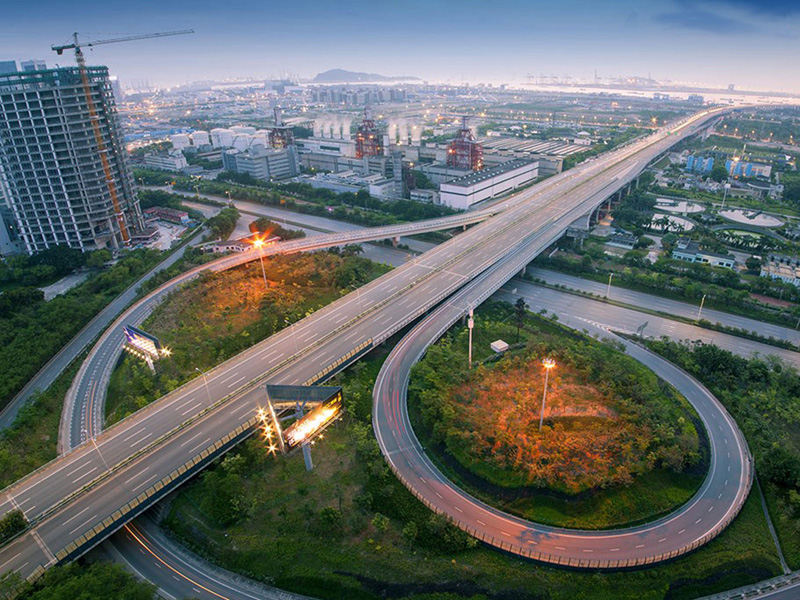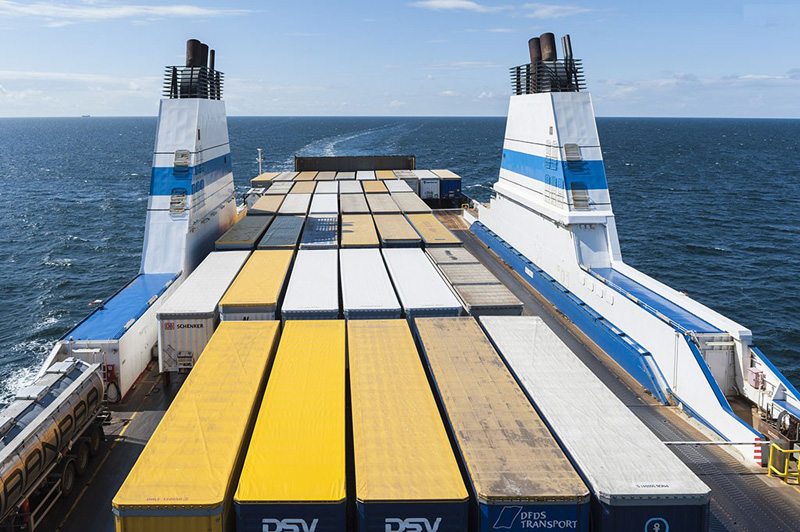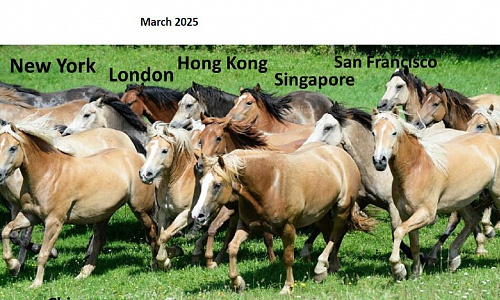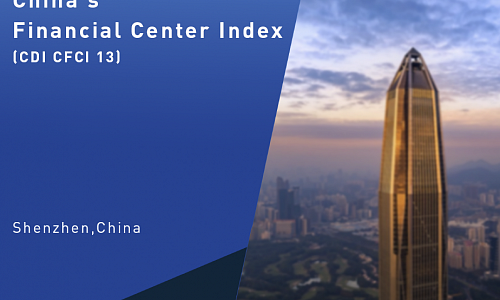CDI International Report on Building a Global Innovation Center: Experience of San Francisco Bay Area and Silicon Valley
Information
 Dr. Sean Randolph, senior director of Bay Area Council Economic Institute, analyzed the particular relevance of both San Francisco Bay Area and Silicon Valley for the future development of Guangdong-Hong Kong-Macao Great Bay Area and Shenzhen.
Dr. Sean Randolph, senior director of Bay Area Council Economic Institute, analyzed the particular relevance of both San Francisco Bay Area and Silicon Valley for the future development of Guangdong-Hong Kong-Macao Great Bay Area and Shenzhen.
Hosted by: CDI
Theme: Building a Global Innovation Center: Experience of San Francisco Bay Area and Silicon Valley
Challenges, Positioning and Development of the Guangdong-Hong Kong-Macao Bay Area
 Author:Zheng Yujie, Director, Information and Communications Department
Author:Zheng Yujie, Director, Information and Communications Department
Editor's Note:The signing of the Framework Agreement for Deepening Guangdong-Hong Kong-Macao Cooperation and Promoting the Development of the Bay Area on July 1, 2017 clarified the direction for Guangdong, Hong Kong and Macao to forge an internationally top-notch Bay Area and world-class city cluster. The challenges and positioning changes facing the Guangdong-Hong Kong-Macao Bay Area will greatly influence the region’s next step.
The Guangdong-Hong Kong-Macao Bay Area was initially established to optimize a combination of markets factors across the globe and provide China with a new open platform to integrate resources. In addition, as profits for copycatting technology shrink and bonuses in economic reform dwindle, the Chinese economy desperately needs an innovation-driven growth model. Furthermore, the Bay Area has become the major growth pole in the global economy and primary engine for technological revolution because of the cluster effect. Finally, the Bay Area’s economy helps Hong Kong translate its free economy and lawful society advantages into competitive strengths which will further stimulate the city's economic expansion.
The Guangdong-Hong Kong-Macao Bay Area holds advantages such as high economic capacity, favorable geographic location, outstanding innovation capability, internationalization and a solid foundation in cooperation. However, in the context of the global economy, the biggest challenges to the Guangdong-Hong Kong-Macao Bay Area are fully integrating the cities in the Bay Area, overcoming administrative and systematic barriers, realizing the optimized allocation of resources and improving the operating efficiency of the whole region.
The positioning of the Guangdong-Hong Kong-Macao Bay Area should be considered from the perspectives of the national economic development strategy and its historically significant mission. First, the Area should explore the trade and investment rules and regulations of high standards, develop an open economic system that match the international community, and function as a hub for the “Belt and Road” strategy. Second, the Area should strengthen its global resources allocation capacity and cultivate a competitive innovation center. Third, the Area should fully harness the unique strengths of Hong Kong and Macao and advocate in-depth collaboration between the Special Administrative Regions and the Chinese mainland. Fourth, the Area should forge a world-class city cluster and a powerhouse of economic growth to become a cornerstone in global and regional competition.
The development the Guangdong-Hong Kong-Macao Bay Area should focus on the following four areas. First, as the transportation network improves, a “commute circle” within the city cluster will be established. Second, innovation will be prioritized over the commercialization of scientific technology and the application of research results, and an innovation ecology network should be established that links the Chinese mainland with Hong Kong and Macao. Third, industrial infrastructure will be upgraded and the proportion of high-end services will continue to rise. Finally, a transition from an export-oriented production center to a production and consumption center focusing on trade in both goods and service will occur.
Positioning of Shenzhen in the Guangdong-Hong Kong-Macao Bay Area
 Author: Guo Wanda, Executive Vice President, CDI
Author: Guo Wanda, Executive Vice President, CDI
Editor’s Note: In the midst of the major historic opportunity presented by the establishment of the Guangdong-Hong Kong-Macao Bay Area, Shenzhen should strive to carry out development concept featuring openness, coordination, innovation and low-carbon economy, and actively integrate into the greater Bay Area.
As one of China's earliest and most successful special economic zones in China, Shenzhen is at the forefront of the country's reform and opening-up efforts. After 37 years of expansion, Shenzhen has cemented a certain position within the global industrial production system and it has become one of China's primary cities in foreign economics and trade as a considerable number of its enterprises have “gone abroad”. With the Guangdong-Hong Kong-Macao Bay Area launching, Shenzhen could form a partnership of industry distribution and city functions with other cities in the region.
The difference between the eastern and western parts of the Pearl River Delta has been widening, which greatly hampers the general growth of the area. Cooperation between cities from the eastern and western shores of the Pearl River needs to be improved with limitations in land resources and environment capacity in cities on the eastern shore. Following the construction of key infrastructure facilities like the Hong Kong-Zhuhai-Macao Bridge and the Shenzhen-Zhongshan Corridor, the connectivity between the eastern and western sides of the mouth of the Pearl River will be better. Consequently, Shenzhen will be positioned as a hub in the three city clusters of Shenzhen-Dongguan-Huizhou, Zhuhai-Zhongshan-Jiangmen, and Guangzhou-Foshan-Zhaoqing, and function as a crucial node among the three free trade zones on the two coasts of the mouth of the Pearl River. This will enable Shenzhen to obtain a larger market and a bigger influence within the Bay Area.
The Guangdong-Hong Kong-Macao Bay Area is an important center for science and technology industries, financial services sector, maritime logistics and manufacturing. It is able to fully conduct the innovation ranging from ideas, fund-raising, research and development to production and industrialization. A group of world-leading enterprises has already emerged from Shenzhen including Huawei, Tencent, ZTE, BYD, BGI Genomics and DJI, and the number of PCT international patents applications from these companies account for half of national total. In terms of innovations in policy, industry and system, Shenzhen has made explorations and accumulated experiences that can serve the whole country, for instance, deployments in strategic emerging industries and future industries, establishment of science and technology funds and governmental supports schemes, and implementation of human resources policies such as "Peacock Plan," talents accommodation program, housing and rental subsidy policy and start-up assistance for students studying abroad. These reforms and measures are valuable reference for the rest of the Bay Area.
Guangdong, Hong Kong and Macao have proposed to jointly build a world-class city cluster that is green and hospitable, so as to provide their residents with a clean, comfortable, efficient, and quality living environment and enhance the overall competitiveness of the greater Pearl River Delta. Shenzhen should incorporate low-carbon concept into urban planning, industry policies, construction facilities and transportation, and seek to establish incentive schemes and policy systems conducive to the sustainable development of the greater Bay Area.
Promoting Hong Kong’s Economy by Integrating into the Guangdong-Hong Kong-Macao Bay Area
 Author: Yang Qiurong, Research Fellow, Center for Hong Kong and Macao Studies
Author: Yang Qiurong, Research Fellow, Center for Hong Kong and Macao Studies
Editor’s Note: Integrating into the Guangdong-Hong Kong-Macao Bay Area and deepening the cooperation with other cities in the Bay Area will boost Hong Kong’s economy.
City clusters are a critical platform enhancing the national competitiveness and regional influence. New York, Tokyo and London are influential cities in the world primarily because of their competitiveness and influence. Integrating into the Guangdong-Hong Kong-Macao city cluster will effectively alleviate risks and challenges troubling Hong Kong today, such as economic imbalance and the lack of innovation. Since the economic exchanges and trade between Mainland China and the rest of world is increasingly closer and the Guangdong-Hong Kong-Macao Bay Area provides a new chance to reposition its function, Hong Kong should leverage on its unique and inherent advantages.
How can Hong Kong effectively integrate into the Guangdong-Hong Kong-Macao Bay Area? Firstly, Hong Kong should capitalize on its advantage in international resources to promote economic opening-up and reasonable industrial distribution within the Guangdong-Hong Kong-Macao Bay Area. Hong Kong should also coordinate with other cities in the Bay Area and conduct innovation in cross-border finance so as to advocate the coordinated development of the Guangdong-Hong Kong-Macao financial sector. Moreover, Hong Kong should strengthen its role as a super-connector in terms of science, technology, logistics, and capital to improve the innovation system of the Bay Area. Hong Kong should, in addition, leverage on its high-end professional services which will be beneficial for the internationalization of enterprises in the Bay Area.
Southeast Asia’s Vital Role in Hong Kong's Participation in the “Belt and Road” Initiative
 Author: Xie Laifeng, Research Assistant, Center for Hong Kong and Macao Studies
Author: Xie Laifeng, Research Assistant, Center for Hong Kong and Macao Studies
Editor’s Note: Hong Kong has always maintained strong investment and trade relations with the countries of Southeast Asia. Thus, the region is paramount to Hong Kong's participation in the “Belt and Road” initiative. Hong Kong should therefore maximize its inherent advantages and deepen its cooperation with Southeast Asia in a range of fields such as finance, professional services, free trade zones and cultural exchanges.
Hong Kong possesses distinct advantages as the critical maritime hub linking China with the rest of the world. Southeast Asian countries are major trading partners with Hong Kong in terms of commercial services, real estate, finance, manufacturing, and insurance; among Hong Kong's top ten trading partners in 2016, countries in Southeast Asia took up four spots and the summative value of trading with these nations made up more than 10% of the annual total. Hong Kong's exports to ASEAN countries climbed by 8.6% in 2016; in addition, 10% of all trade between the Chinese mainland and Southeast Asia goes through Hong Kong, and this figure is on the rise. Thus, Southeast Asia has a critical position in Hong Kong's foreign economy.
As an international finance and global asset management center, Hong Kong’s abundant high-quality capital, talent, and other resources can provide financing services for Chinese enterprises engaged in infrastructure development, industrial parks, investment, and other capital projects in Southeast Asia. In addition, Hong Kong has garnered global recognition and approval in areas such as law and international arbitration, which are likely to be beneficial for a range of “Belt and Road” projects Southeast Asia.
Hong Kong should deepen its collaboration with Southeast Asia in four principal areas. Initially, Hong Kong should fully capitalize on its advantages in the fields of finance and investment and strive to establish branches of the Asia Investment Bank and Silk Road Fund in order to provide financing for “Belt and Road” projects. Hong Kong should also combine its strengths in professional services with the technical prowess of mainland enterprises to facilitate overseas infrastructure construction and the development of industrial parks in order to jointly expand overseas markets. Hong Kong should, in addition, take advantage of its strengths as a free port, and actively participate in the Regional Comprehensive Economic Partnership (RCEP) in order to cement its key role in the Chinese-Southeast Asian trade network. Finally, Hong Kong should leverage on its geographical proximity to and cultural similarities with Southeast Asia to reinforce its human-level exchanges with the region.
New Amber Route in Northern Europe
 Author: Zhang Guoping, Postdoctoral Researcher, CDI
Author: Zhang Guoping, Postdoctoral Researcher, CDI
Editor’s Note: The proposal of the Amber Route has clearly defined the potential of complementary industries in the future between China and the Nordic countries, and will expand and deepen economic and trade cooperation between China and the Nordic and Arctic region.
Arctic region has weak infrastructure but the enormous potential needs. The construction of Arctic transport will bring the world a more efficient transportation system, and substantial increase for local economic opportunities. The "Belt and Road" initiative has brought a large amount of investment to infrastructure in Nordic and Arctic region. For example, the Silk Road Fund, with a $40 billion investment, has bought 9.9% shares of the Yamal liquefied natural gas project that is worth $27 billion. Meanwhile, three-dimensional traffic pattern project of Finland has begun to form through the "Belt and Road" initiative. The freight trains from China, Zhengzhou (or Xi'an) to Kouvola will be opened which will bring a new branch to the China-Europe freight train service. COSCO has also designed and built a world leading general cargo vessel to regularly sail northward and berth in Finland. In aviation, Finland Airlines currently operates six direct flights to China.
In terms of bilateral economic and trade cooperation, Nordic countries, with a range of traditional competitive industries such as shipping, agriculture, paper making and marine fishery, agree and complement with China that raises requirements in emerging industry development. Emerging advantage areas including green energy, high-end precision instruments, environmental protection, health care and creative design also attract Chinese capital to northern Europe. At present, small and medium-sized enterprises (SMEs) are the main forces in Nordic developed countries to absorb social employment and promote technological innovation, with strong technical superiority and innovative ability. These enterprises are lack of funds and markets in exploiting the overseas market while China's capital and markets just make up such demands. By encouraging China’s financial institutions and environmental technology, bio-pharmaceutical enterprises to issue bonds and test venture investment in Nordic countries, we may explore and promote the SME Development Fund to provide financing, market information sharing and other facilities for SME cooperation between the countries, and give play to the role of Silk Road Fund.
"Belt and Road" Opens Golden Age of Sino-British Cooperation
 Author: Zhang Guoping, Postdoctoral Researcher, CDI
Author: Zhang Guoping, Postdoctoral Researcher, CDI
Editor’s Note: Britain's participation in the "Belt and Road" Initiative is an important opportunity to open the Chinese domestic market and third country markets. China and Britain are highly complementary in trade structure. By strengthening the docking of development strategies, and promoting mutually beneficial cooperation in trade, investment, finance and energy, they may lay a solid foundation for the "Belt and Road” cooperation.
The "Belt and Road” initiative will create massive RMB denominated assets in overseas areas, and promote the internationalization of RMB. The huge financing requirements for projects along the lines will prompt the issuance of offshore market dim-sum bonds and other types of bonds. London can provide diversified international investors for Chinese enterprises and customers, actively involve global capital markets in the process, and connect capital pools of different currencies, so as to establish a sustainable financing mechanism for the offshore market. For instance, China’s policy banks and international multilateral development agencies may take advantage of offshore markets such as London, and increase issuance of long-term bonds related to the "Belt and Road", to improve the yield curve, expand the development of the secondary offshore bond market, and improve the “Belt and Road’s" long-term financing mechanism.
In terms of Britain, the Northern Economic Growth Area strategy can completely dock the "Belt and Road” initiative, to share China’s capital, infrastructure construction technology and experience, and realize in-depth complementation between the two countries with regards to cooperation and investment. Northern England has become increasingly important to the economy of the entire UK. Many large multinational groups are investing for development there. It will quickly become a global innovation enterprise investment center. China's development path and infrastructure experience may provide high-speed rail technology and finance, and stimulate Northern England’s economic vitality.
In the field of cooperation with a third country, British companies may complement their Chinese counterparts with technological advantages on international infrastructure projects. They may also carry out international cooperation in project management, financing, design, planning and environmental protection. Britain could serve as a support point at the western end of the "Belt and Road" with its expertise in professional services. The advantages of engineering design and consulting, financial services, and legal services will provide significant opportunities for the United Kingdom’s professional services to participate in the infrastructure projects.
Following Brexit, Britain’s export situation has worsened. Accelerating the development and operation of China-Europe freight trains, and strengthening Britain's engagement with other global trading partners, will help British products to go global.
Swiss Student Delegation Visits CDI
 A delegation of 48 students from Swiss universities paid a visit to CDI. Dr. Guo Wanda, Executive Vice President of CDI, lectured students on “Chinese Economy and Shenzhen Special Economic Zone: The Transformation of China”. The lecture covers four parts: “Chinese Economy in the Past”, “Chinese Economy in the Future”, “Shenzhen:A Special Economic Zone” and “Shenzhen’s Innovation and Its Role in China’s Transformation”.
A delegation of 48 students from Swiss universities paid a visit to CDI. Dr. Guo Wanda, Executive Vice President of CDI, lectured students on “Chinese Economy and Shenzhen Special Economic Zone: The Transformation of China”. The lecture covers four parts: “Chinese Economy in the Past”, “Chinese Economy in the Future”, “Shenzhen:A Special Economic Zone” and “Shenzhen’s Innovation and Its Role in China’s Transformation”.
Economic Consul of British Consulate-General Guangzhou Visits CDI
 On July 11, Mr. Steve Arrick, Economic Consul of British Consulate-General Guangzhou visited CDI. Mr. Zheng Yujie, Director of Information and Communications Department, Mr. Cao Zhongxiong, Executive Director of New Economy Research Department exchanged views with the guests on the topics of Guangdong-Hong Kong-Macao Greater Bay Area and China Manufacturing 2025, the challenges of urban integration in Guangdong Province, and Hong Kong's transformation during the growth of China's Greater Bay Area.
On July 11, Mr. Steve Arrick, Economic Consul of British Consulate-General Guangzhou visited CDI. Mr. Zheng Yujie, Director of Information and Communications Department, Mr. Cao Zhongxiong, Executive Director of New Economy Research Department exchanged views with the guests on the topics of Guangdong-Hong Kong-Macao Greater Bay Area and China Manufacturing 2025, the challenges of urban integration in Guangdong Province, and Hong Kong's transformation during the growth of China's Greater Bay Area.
CDI Delegation Attends the 2017 Moscow Urban Forum
 Guo Wanda, Executive Vice President of CDI, and Zeng Zhen, Executive Director of Urbanization Department at CDI, gave speeches at the 2017 Moscow Urban Forum held by the Moscow government from July 6 to July 7. Representatives from think tanks, enterprises and UNESCO discussed the prospect of urbanization and its influence on national economies in the context of globalization. CDI delegation shared the success of establishing special economic zones and upgrading old industrial areas in China, showing the cases of The Qianhai & Shekou Free Trade Zone in Shenzhen, and Shiwan Industrial Zone.
Guo Wanda, Executive Vice President of CDI, and Zeng Zhen, Executive Director of Urbanization Department at CDI, gave speeches at the 2017 Moscow Urban Forum held by the Moscow government from July 6 to July 7. Representatives from think tanks, enterprises and UNESCO discussed the prospect of urbanization and its influence on national economies in the context of globalization. CDI delegation shared the success of establishing special economic zones and upgrading old industrial areas in China, showing the cases of The Qianhai & Shekou Free Trade Zone in Shenzhen, and Shiwan Industrial Zone.
The Moscow Urban Forum was established in 2011 and it has covered a wide range of topics such as sustainable development, urban planning, and urban conglomerations.










